Ekspress AT-1 and AT-2
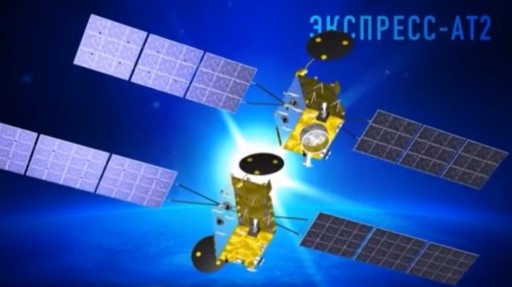
Ekspress AT-1 and AT-2 are Geostationary Communications Satellites built by ISS Reshetnev for the Russian Satellite Communications Company that will operate the spacecraft as part of the existing Ekspress satellite fleet to provide communication services to Russian and surrounding territories. The two satellites use different platforms and host different satellite payloads, both communication payloads were built by Thales Alenia Space.
The first Ekspress satellite was launched in 1994 to replace the aging Gorizont communication satellites. The Ekspress program had the overall goal to close the technology gap between Russia and Western comm satellite manufacturers. Between 1994 and 2001, two first generation Ekspress satellites and four improved Ekspress A satellites were launched (one was destroyed in a launch failure).
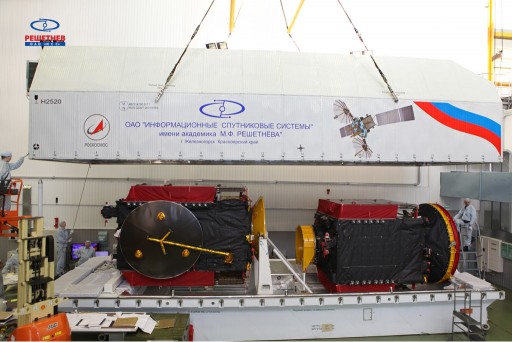
The Ekspress AM series of satellites was inaugurated in 2003 and represents powerful communication satellites with long on-orbit service lives and flexible communication payloads. Eight Ekspress AM satellites were launched to date – Ekspress AM-4 did not reach its correct orbit in 2011 and was disposed via a targeted re-entry. In addition to Ekspress AM satellites, Ekspress MD satellites are being launched to maintain an alternate supplier of communications satellites as the MD spacecraft are built by Khrunichev. Two Ekspress MD satellites were launched in 2009 and 2012, but the last launch left the satellite in a useless orbit after an upper stage failure.
In late 2013, a Proton-M/Briz-M delivered the Ekspress AM-5 satellite to orbit, the most advanced Russian Communications satellite launched to date hosting 84 transponders covering C-, Ku-, Ka- and L-Band frequencies with a total payload power of 12,700 Watts. Over the coming years, a number of Ekspress AM satellites are planned to be launched as well as the two Ekspress AT satellites.
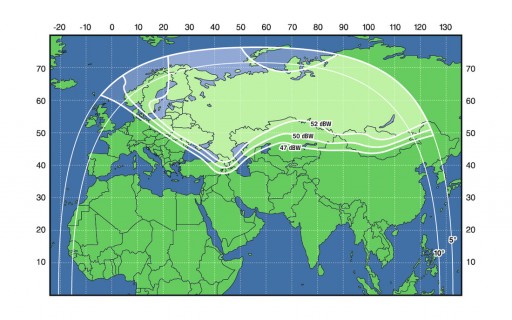
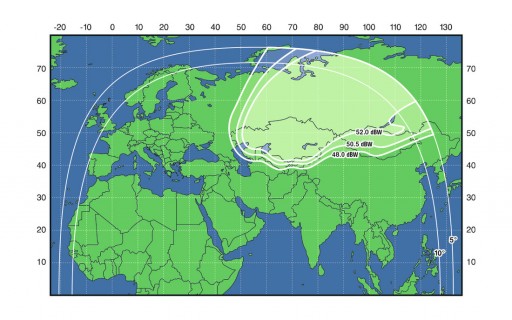
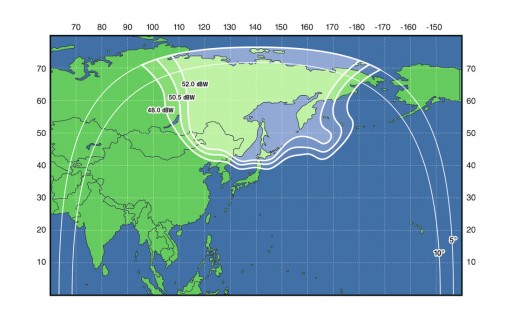
Ekspress AT-1 is based on the Ekspress-1000N satellite platform that is capable of hosting powerful communication payloads providing propulsion, power generation, power storage and distribution, precise navigation and accurate Earth pointing and stationkeeping capabilities. Weighing 1,726 Kilograms, Ekspress AT-1 uses two three-segment solar arrays to provide a total payload power of 5,600 Watts at the end of the satellite’s life span.
The all Ku-Band communications payload manufactured by Thales Alenia space consists of 32 transponders. Two large antenna reflectors are used by the satellite to serve a Wide Fixed Service Area covering eastern and northern Europe and the eastern and central part of the Russian Federation. The Eastern Fixed Service Area covers central and eastern Russia and Kazakhstan.
Ekspress AT-1 will replace the Bonum 1 satellite at an orbital position of 56 degrees east in Geostationary Orbit. The satellite will operate for at least 15 years.
The spacecraft will provide Direct-to-Home Television Services and radio broadcast. Part of its payload (19 Ku-Band transponders) have been leased to Eutelsat for digital television broadcast.
Ekspress AT-2 is based on the smaller Ekspress-1000K satellite bus, marking the first time this platform is flown. The platform delivers power to the payload and hosts the required satellite systems for navigation, attitude control, propulsion, and command/control. The spacecraft has a launch mass of 1,427 Kilograms and also features two three-panel solar arrays for power generation.
The Ekspress AT-2 satellite hosts a Ku-Band payload of 16 transponders also built by Thales Alenia Space. The payload has a total power of 3,000 Watts. One antenna reflector is used to serve a Fixed Service Area covering the easternmost part of the Russian Federation, and the north-eastern tip of China.
Stationed at 140 degrees East, Express AT-2 has an expected service life of 15 years. Ekspress AT-2 also provides Direct-to-Home Television services and radio broadcasting. Eutelsat is also leasing capacity on the AT-2 satellite.
